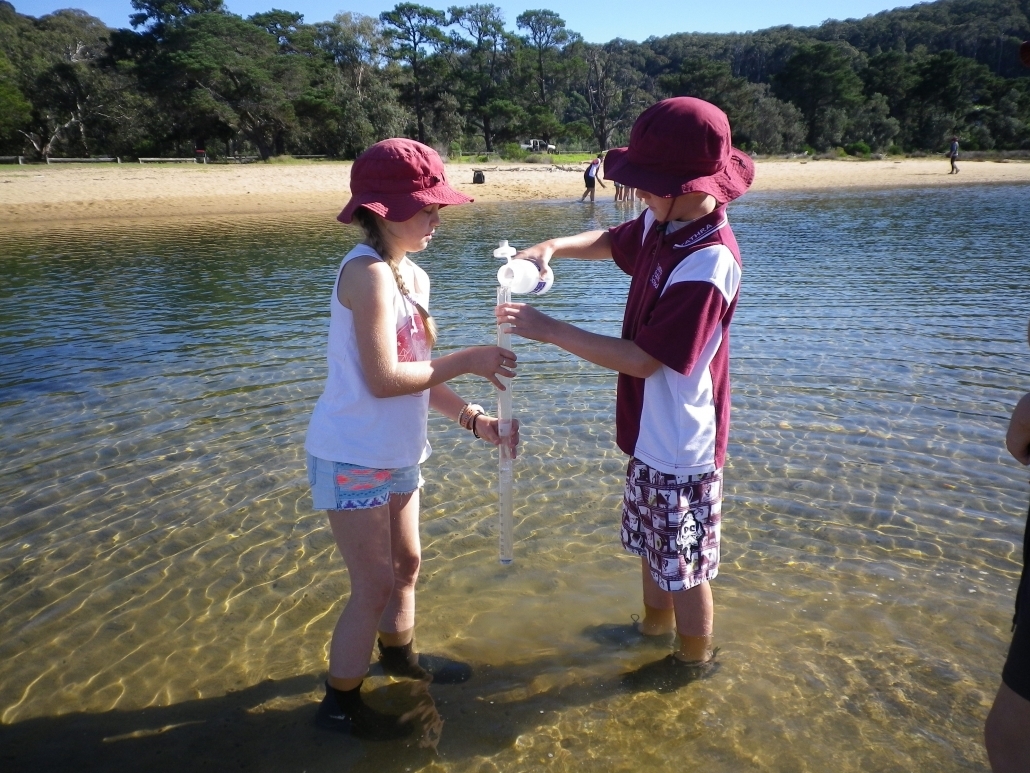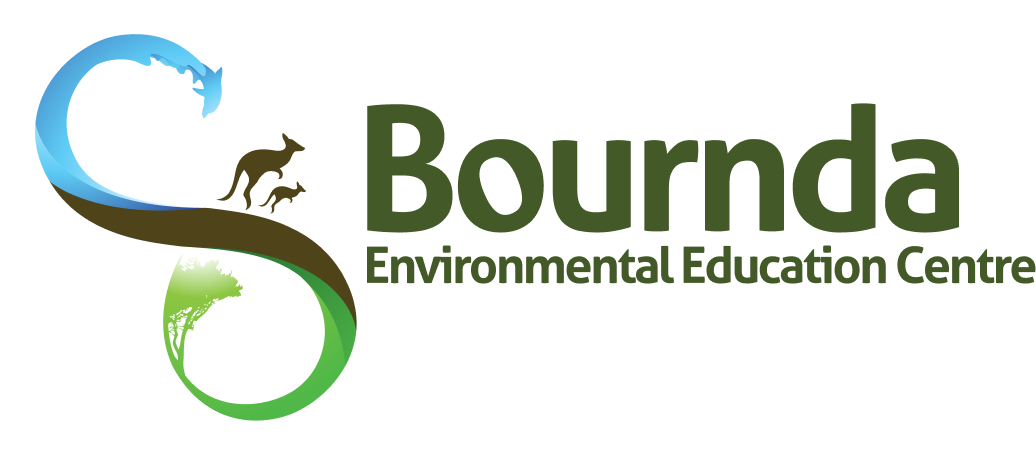Stage 3 – Geography – Factors that Shape Places

Program Overview
‘Factors that Shape Places’ is a Stage 3 program that uses the geographical inquiry process and geographical tools to investigate how people have changed the environment in and around Bournda National Park and the impact this has on those environments. Students complete three fieldwork activities:
- students examine the health of an estuary in the National Park by collecting and recording water quality data and completing a biodiversity study
- students use a GPS and topographic map to find locations that help them to explore the issues surrounding land clearing and faming, both in the past and the present
- students conduct a survey of marine debris and look for micro plastics using a digital microscope
Key Questions
How do people and environments influence one another?
How do people influence places and the management of spaces within them?
Learning Experiences
Fieldwork activity 1
Estuary Waterwatch allows students to examine what an estuary is and why they are important. Students discuss factors that effect the estuary environment in Bournda National Park and then complete a water quality analysis and a biodiversity study.
Students use water quality test kits to test pH, temperature, turbidity and salinity. They record this information on data sheets. Students then use dip nets to collect samples of estuary specimens to examine. Sorting trays are used and students are assisted with the task of identifying species. Data is recorded.
Students then discuss the following questions: How can a biodiversity survey indicate how healthy an estuary is? Why test water quality? Why is clean water important? Is this estuary healthy? What factors may be affecting the health of this estuary?
Fieldwork activity 2
Factors that change environments allows students to investigate the way people have changed the natural environment in and around Bournda National Park. The focus is on the impact to the natural environment from land clearing and farming.
Students use GPS devices in small groups to complete a geocache activity around the Scott’s Bay picnic area. During this activity they search for hidden locations that relate to the history of farming in the area and identify human features that have been provided to protect the site. If time permits students walk to an area of cleared land adjacent to the National Park to compare to the two environments and discuss the impacts of land clearing on the natural environment.
Fieldwork activity 3
Humans shape places allows students to investigate how people influence natural places in both sustainable and unsustainable ways. The students conduct a marine debris survey and safely collect and sort debris they find in and around Wallagoot Lake. Samples of marine debris are also provided for students to sort and examine. A digital microscope is used to look for micro plastics in sand samples and this issue is discussed. Students consider the amount and type of litter and discuss how long some of these items last in the environment. Students brainstorm ways that they can reduce the impact of marine debris in the local environment and contribute positively to sustainability.
Preparing for an Excursion
Syllabus Outcomes
Geography K-6
• Students describe the diverse features and characteristics of places and environments (GE3-1)
• Students explain interactions and connections between people, places and environments (GE3-2)
• Students compare and contrast influences on the management of places and environments (GE3-3)
• Students acquire, process and communicate geographical information using geographical tools for inquiry (GE3-4)
Geographical tools
Students will:
- use topographic maps to identify location, distance, map references and land use
- observe, measure, collect and record data
- use fieldwork equipment
- use global positioning systems (GPS) and digital microscope
Geography Content
Students:
• investigate the ways people change the natural environment in Australia and another country, for example: (ACHGK026, ACHGK027)
– examination of how people, including Aboriginal and Torres Strait Islander Peoples, have influenced each country’s environmental characteristics eg land clearing
• investigate how people influence places, for example: (ACHGK029)
– description of who organises and manages places eg local and state governments
– identification of ways people influence places and contribute to sustainability
Differentiation adjustments for high potential and gifted students
Authenticity – How can we influence the environments around us to make them more sustainable? Students can action plan sustainable solutions to issues in their school, home or community. Students can be supported to take action on these real-world problems.
